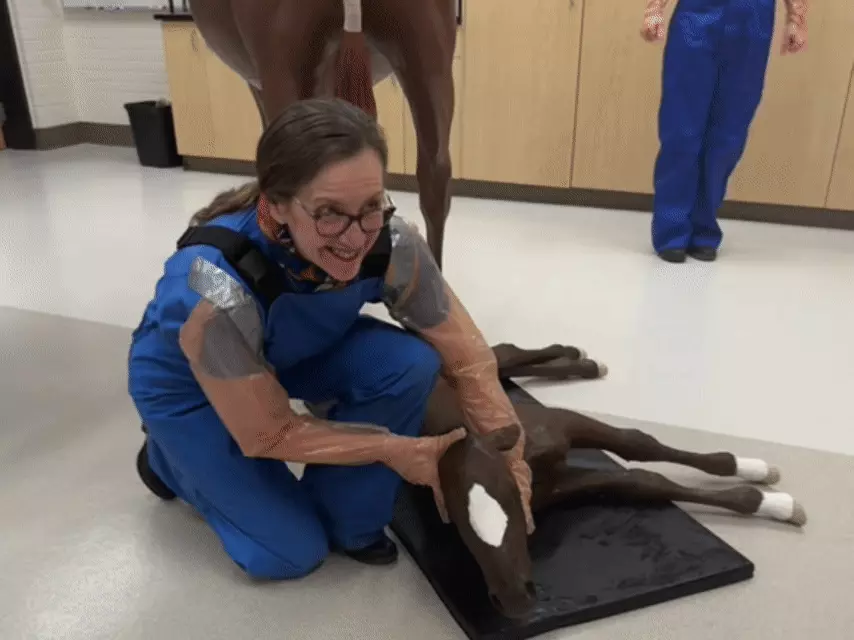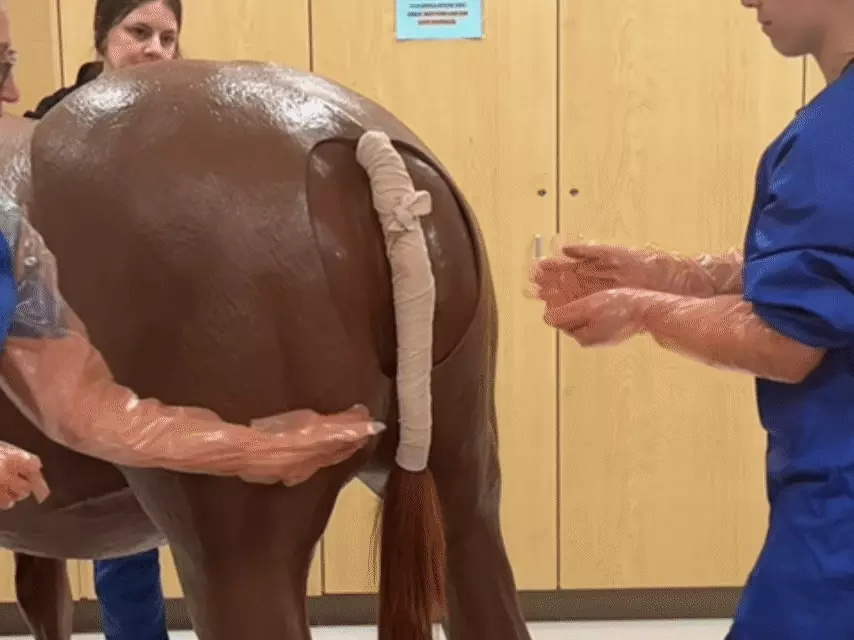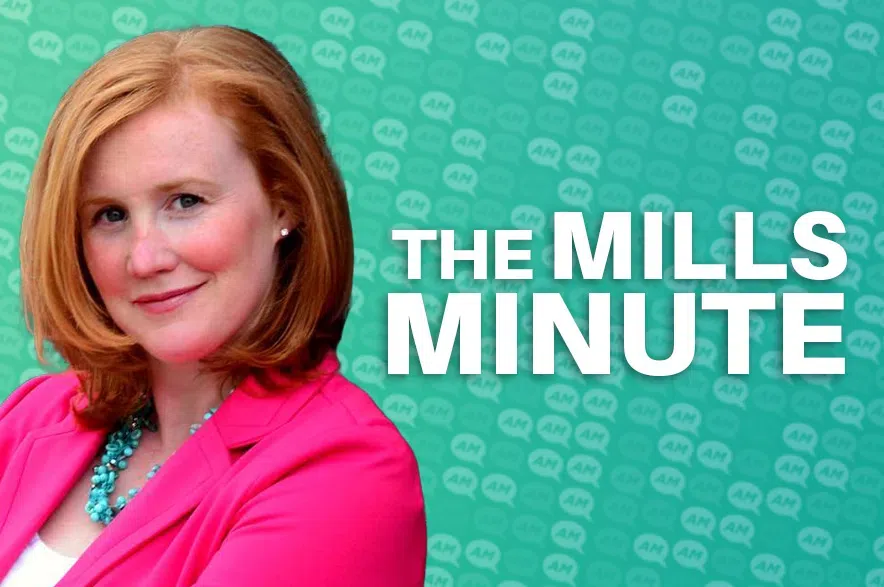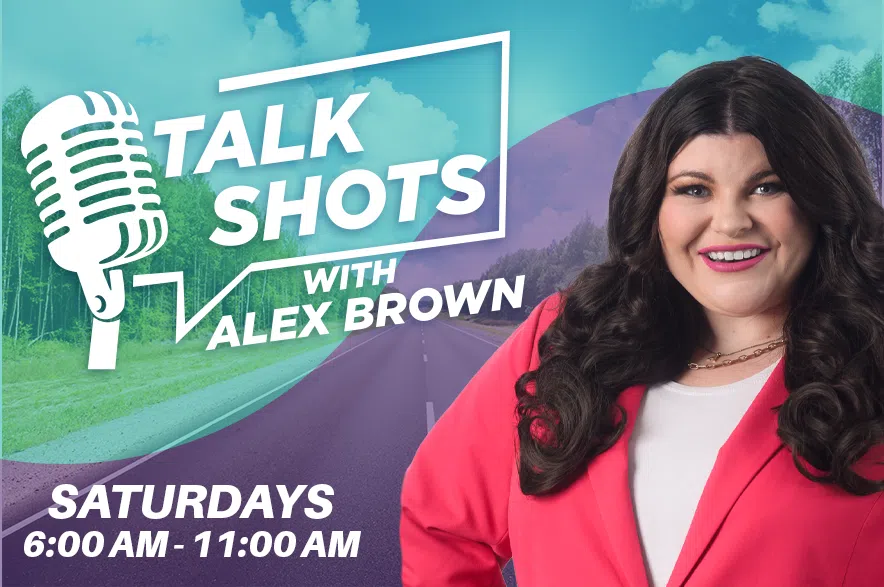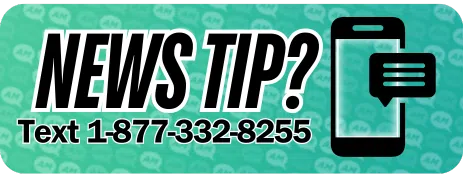A pair of life-sized horse simulators, affectionately named Bubbles and Biscuit, are transforming how veterinary students at the University of Saskatchewan (USask) learn to assist with one of the most challenging and critical procedures in animal care: helping mares give birth.
The mare and foal models were gifted to the Western College of Veterinary Medicine (WCVM) by Calgary-based educator and philanthropist Dr. June Donaldson, whose donation was inspired by a lifelong love of horses and a deep appreciation for the role of hands-on education.
“These models allow our students to safely and repeatedly practice foaling scenarios that would be too high-risk or rare to observe in real life,” said Dr. Gillian Muir, Dean of WCVM.
“It’s a game-changer. With simulation, students can build confidence and competence before encountering these situations with live animals.”
The realistic simulators, crafted by Veterinary Simulator Industries (VSI) in Calgary, are the first of their kind at USask, specifically designed to simulate the birth of a foal.

Dr. Donaldson named the mare “Bubbles” in tribute to a beloved childhood horse and the foal “Biscuit” after Seabiscuit, the legendary racehorse and symbol of hope during the Great Depression. (Alex Brown/650 CKOM)
Students can manipulate the position of the 35-kilogram foal model inside the mare to learn how to resolve difficult births and ensure safe outcomes for both animals.
Read more:
- Former Saskatoon mayoral candidate charged in North Battleford armed robbery
- Snooping nurse fired from Yorkton Regional Health Centre
- Police seize swords, crossbow, body armour, tasers during drug bust
Foaling, or equine birthing, is a delicate and fast-moving event.
It’s often impractical for large groups of students to be present during live births and opportunities for hands-on learning are rare.
The simulators allow students to work closely with equine reproduction experts and master the techniques needed to navigate real-life emergencies without any risk to living animals.
Dr. Donaldson named the mare “Bubbles” in tribute to a beloved childhood horse and the foal “Biscuit” after Seabiscuit, the legendary racehorse and symbol of hope during the Great Depression.
Her donation was inspired by a tour of the BJ Hughes Centre for Clinical Learning at WCVM last fall.
“I was blown away by the facility,” Donaldson said. “When (someone) mentioned they needed a mare and foal model, I just thought, yeah, I think I can pull this off. Then it just clicked.”
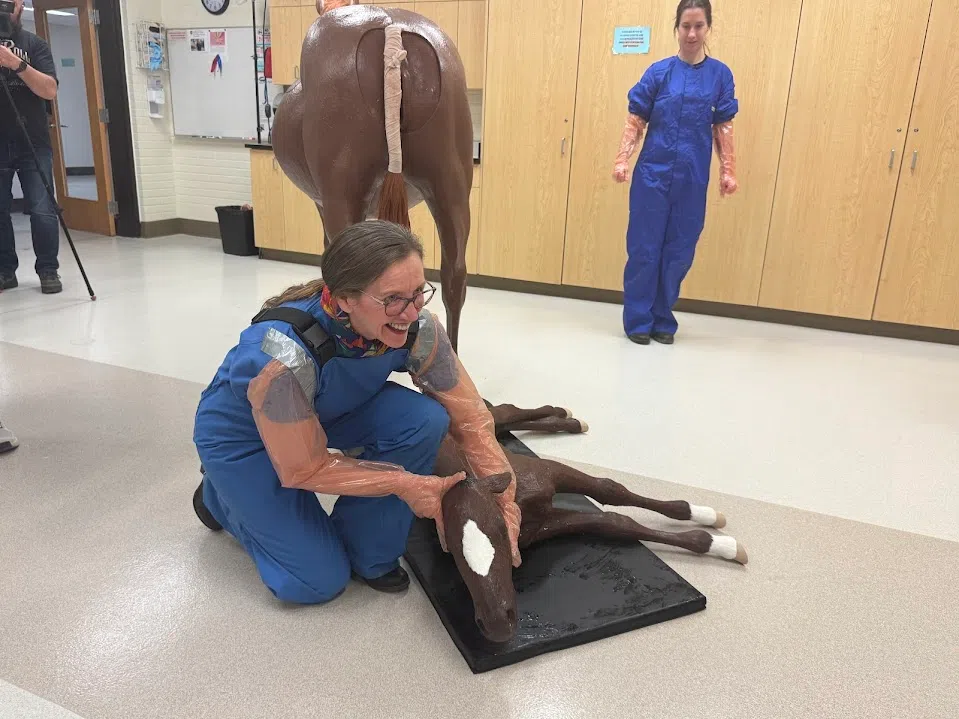
Students can manipulate the position of the 35-kilogram foal model inside the mare to learn how to resolve difficult births and ensure safe outcomes for both animals. (Alex Brown/650 CKOM)
Donaldson’s gift also carries personal touches, like the lipstick kiss she planted on Bubbles’ nose when she first saw the finished model, a symbol of her emotional connection to the project.
For students, the simulators are more than high-tech teaching tools, they represent a major step forward in experiential learning.
“Practicing with these models means the first time a student helps deliver a foal, it’s not their first time doing it,” Muir said. “That’s a huge advantage for the safety of both the animals and the future veterinarians we’re training.”
As simulation becomes a cornerstone of veterinary education across North America, WCVM’s growing “herd” of models — ranging from calves to horses — is helping shape a new generation of veterinarians ready to hit the ground running.
